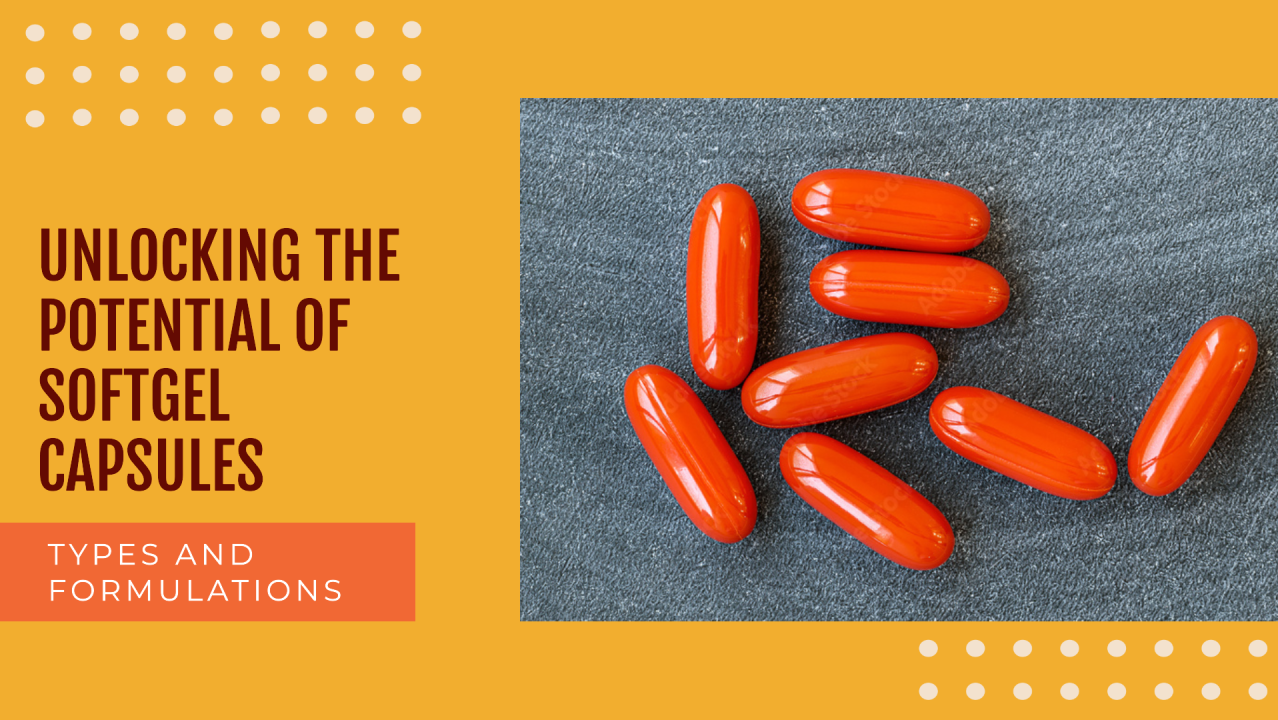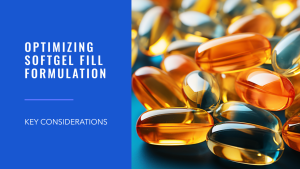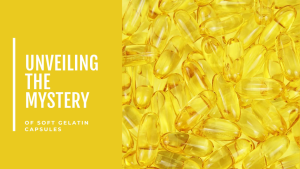Unlocking the Potential of Softgel Capsules: Types and Formulations

Softgel capsules are a popular choice for delivering a wide range of compounds, from pharmaceuticals to nutritional supplements. Their versatility and efficacy hinge on the type of fill material used. Let’s explore the three primary types of fills for softgel capsules: Single Oil or Oil Mixtures, Solutions, and Suspensions (Paste).
The Science Behind Softgels
Softgels consist of a gelatin-based shell encapsulating a liquid or semi-solid fill. The composition of the fill varies depending on the desired therapeutic or nutritional effect. Common fill types include:
- Oils: Pure oils or blends, suitable for lipophilic compounds like vitamins and omega-3 fatty acids.
- Solutions: Homogenous mixtures where the active ingredient is dissolved in a suitable solvent, ideal for poorly soluble drugs.
- Suspensions: Solid particles dispersed in a liquid matrix, allowing for the encapsulation of poorly soluble or unstable compounds.
Single Oil or Oil Mixture Products
Single oil or oil mixtures are the most straightforward to produce. Oils are placed in a transfer tank and then moved to the encapsulation machine.
Common Examples: Vitamin E, fish oils, plant oils, lecithin, and docusate sodium. Additives like antioxidants and flavorants can be included.
Key Points:
- These oils are easily encapsulated neat or with dilution.
- They are often blended to achieve specific attributes.
- Adherence to the “like dissolves like” principle ensures miscibility.
Applications: Oil-filled softgels are widely used due to their simplicity and effectiveness, with billions produced annually. They cater to various sectors, including pharmaceuticals, cosmetics, and industrial products.
Solution Products
A solution is a homogeneous mixture where solute particles are dissolved in a solvent, forming a single-phase mixture.
Characteristics:
- Solutions have small solute particles (0 to 100 nanometers).
- Solute particles do not settle and cannot be separated by filtering.
- Light passes through solutions without scattering.
Applications: These are used when a uniform distribution of the active ingredient is required, ensuring consistent dosage and absorption.
Suspension or Paste Products
Suspensions (typically called paste products) consist of non-water miscible substances suspended in a carrier base, usually oils or polyethylene glycol (PEG).
Characteristics:
More chemically stable than solutions, as ingredients do not dissolve into the solution.
- Involve a range of viscosities from thin to thick.
- Aim to prevent separation or settling, ensuring uniform dispersion.
Formulation Goals: Ensuring the homogeneity of suspensions is crucial for maintaining dose consistency. This often requires additional agents to modify viscosity and prevent settling.
Applications: These are particularly useful for actives that are not soluble in oils, providing stability and ensuring effective delivery of the active ingredient.
Ensuring Suspension Stability
Maintaining the stability and uniformity of suspensions is crucial for dose consistency. Factors influencing stability include:
- Particle Size and Distribution
- Particle Shape and Interactions
- Concentration and Drug Salt
Various scientific models, such as the Stokes equation, help predict and optimize suspension behavior.
Key Considerations for Softgel Formulation
- Environmental Sensitivity: Softgels are sensitive to temperature, humidity, and light. They can lose or gain moisture, affecting their weight and efficacy.
- Raw Material Incompatibilities: Certain materials, like those with high water content, extreme pH, or high fatty acid content, can be unsuitable for softgel encapsulation due to stability concerns and potential chemical reactions.
- Absorption and Bioavailability: Effective softgel formulations enhance the absorption and bioavailability of active ingredients. This involves understanding the interactions between fill materials and shell materials, ensuring they work synergistically.
- Types of Liquid Ingredients: Hydrophobic liquids (e.g., aromatic oils, vegetable oils) and hydrophilic liquids (e.g., PEG, glycerin) can be encapsulated, each with specific properties impacting their suitability and stability in softgels.
The Future of Softgel Technology
Softgel technology continues to evolve, with ongoing research focused on:
- Novel Fill Formulations: Exploring new ways to improve the bioavailability and stability of active ingredients.
- Advanced Shell Materials: Developing gelatin alternatives with enhanced performance and sustainability.
- Targeted Delivery Systems: Designing softgels that release their contents at specific sites in the body
Real-World Applications
Softgels are widely used across various sectors, including pharmaceuticals, nutraceuticals, and cosmetics. Their versatility makes them suitable for delivering vitamins, minerals, oils, and complex drug formulations.
Expert Insights
Softgels offer unparalleled flexibility in formulation, making them ideal for a wide range of active ingredients. Their ability to enhance bioavailability and protect sensitive compounds is a significant advantage.
Conclusion
The field of softgel formulation is dynamic and constantly evolving. To stay at the forefront of innovation, collaboration between scientists, manufacturers, and regulators is essential. By sharing knowledge and expertise, we can continue to improve the quality, safety, and efficacy of softgel products.
Read the original text here
Source: Vitor Jacó Antraco and Sair Torregrosa, LinkedIn (68) Unlocking the Potential of Softgel Capsules: Types and Formulations | LinkedIn
See the full article series:



- Gelatin Shell Material and Formulations for Softgels: An In-Depth Guide
![Gelatin Shell Material and Formulations for Softgels: An In-Depth Guide]()
Gelatin Shell Material and Formulations for Softgels: An In-Depth Guide


